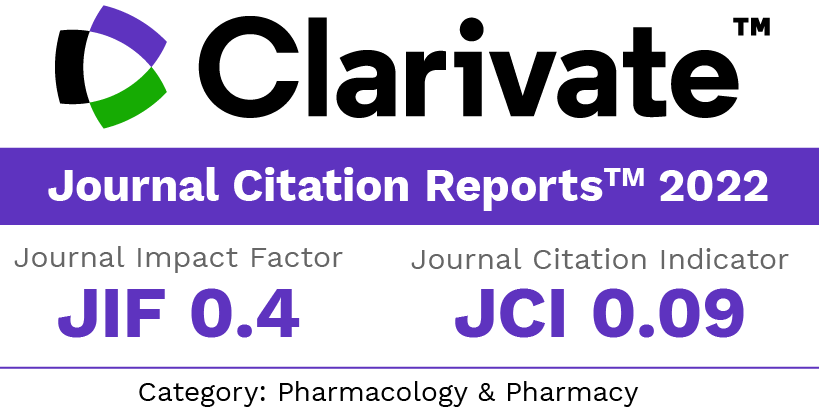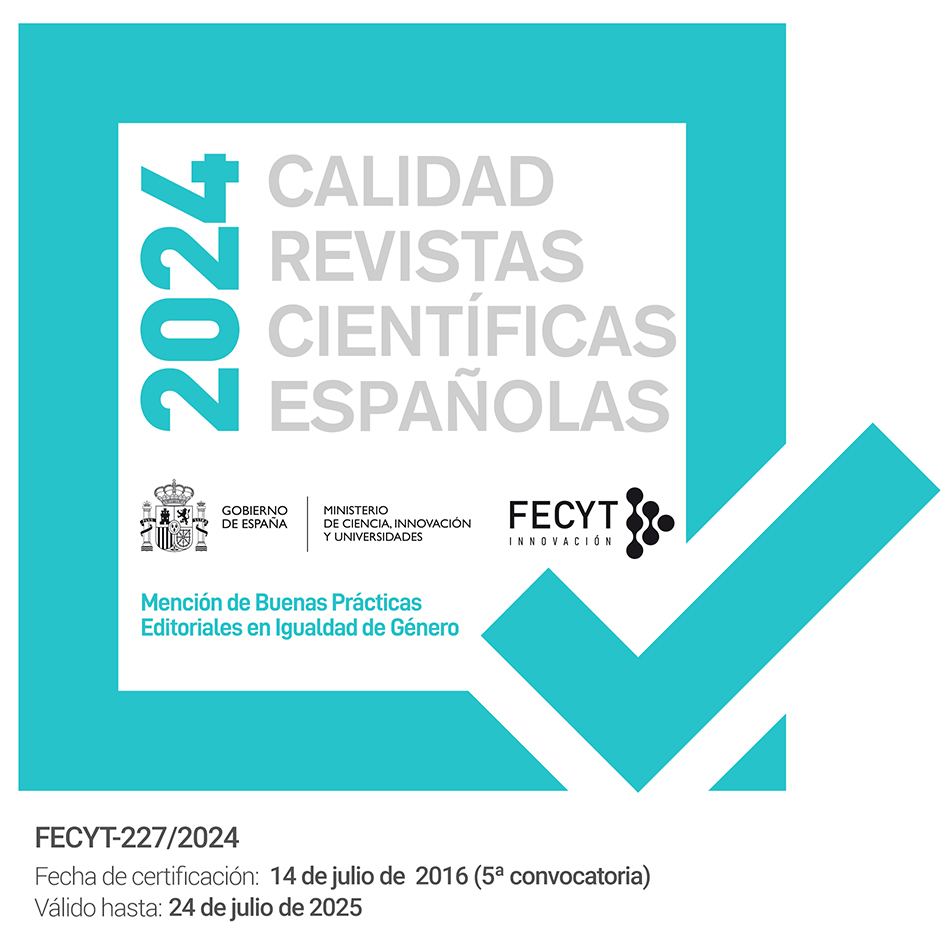Ionotropically cross-linked κ-carrageenan gel beads of pepsin for stability improvement: optimization and physicochemical characterization using Box-Behnken design
Keywords:
Biopolymer, Carrageenan, Dissolution, Hydrogel, Ionotropic gelation, Pepsin, Stability, Thermal analysisAbstract
This work examines the infl uence of process parameters, namely κ-carrageenan concentration, potassium chloride concentration,and hardening time, on pepsin entrapped in ionotropically crosslinked κ-carrageenan beads for improvementof its stability using response surface methodology. A Box-Behnken design was employed to investigate the effect ofprocess variables on the entrapment, time required for 50% enzyme release (T50), time required for 90% enzyme release(T90), and particle size. The beads were prepared by dropping the κ-carrageenan containing pepsin into a magneticallystirred potassium chloride solution. In vitro enzyme release profi le of the beads was fi tted to various release kineticsmodels in order to understand the release mechanism. Topographical characterization was carried out by SEM, andentrapment was confi rmed by FTIR and DSC. Stability testing was carried out according to the ICH guidelines forzones III and IV. A polymeric matrix prepared by 3.0% w/v κ-carrageenan and 0.3 M potassium chloride using theionotropic gelatin method, with a hardening time of 10 min resulted in the production of beads characterized by aspherical disk shaped with a collapsed center, an absence of aggregates, an entrapment of more than 80%, and a T90of less than 40 min. The shelf-life of the pepsin-loaded beads was found to increase to 3.24 years compared with 0.97years for the conventional formulation. It can be inferred that the proposed methodology can be used to prepare pepsinloadedκ-carrageenan beads for stability improvement. In addition, the proper selection of rate-controlling carrageenanconcentration and their interactive potential for crosslinking is important, and will determine the overall size and shapeof beads, the duration and pattern of dissolution profi les, and the enzyme loading capacity.Downloads
References
Barrett AJ. In: Evered D, Whelan J (ed.) Protein Breakdown in Health and Disease, Excerpta Medica, Amsterdam, 1980; pp 1-13.
Sielecki AR, Fedorov AA, Boodhoo A, Andreeva NS, James MNG. The molecular and crystal structures of monoclonic porcine pepsin refined at 1.8 Å resolution. J. Mol. Biol. 1990; 214: 143-170.
Bryksa BC, Tanaka T, Yada RY. N-terminal modification increase the neutral-pH stability of pepsin. Biochemistry 2003; 42: 13331-13338.
Foltmann B, Pedreson VB. Comparison of the primary structures of acidic proteases and their zymogens. Adv. Exp. Med. Biol. 1977; 95: 3-22.
Lin Y, Fused M, Lin X, Hartsuck JA, Tang J. pH dependence of kinetic parameters of pepsin, Rhizopuspepsin and their active-site hydrogen bonds mutants. J. Biol. chem. 1992; 267: 18413-18418.
Chen H, Langer R. Magnetically-responsive polymerized liposomes as potential oral delivery vehicles. Pharm. Res. 1997; 14: 537-540.
Picker KM. Matrix tablets of carrageenans. II. Release behavior and effect of added cations. Drug Dev. Ind. Pharm. 1999; 25: 339-346.
Suzuki S, Lim JK. Microencapsulation with carrageenan-locust bean gum in a multiphase emulsification technique for sustained drug release. J. Microencapsul. 1994; 11: 197-203.
Sipahigil O, Bortunc B. Preparation and in vitro evaluation of verapamil HCl and ibuprofen containing carrageenan beads. Int. J. Pharm. 2001; 228: 119-128.
Garcia AM, Ghaly ES. Preliminary spherical agglomerates of water soluble drug using natural polymer and crosslinking technique. J. Controlled Release 1996; 40: 179-186.
Prestwich GD, Marecak DM, Marecak JF, Vercruysse KP, Ziebell MR. Controlled chemical modification of hyaluronic acid. J. Control. Rel. 1998; 53: 93-103.
Mangione MR, Giacomazza D, Bulone D, Martorana V, Cavallaro G, San Biagio PL. K(+) and Na(+) effects on the gelation properties of kappa-Carrageenan. Biophys Chem 2005; 113: 129-35.
Naim S, Samuel B, Chauhan B, Paradkar A. Effect of potassium chloride and cationic drug on swelling, erosion and release from kappa-carrageenan matrices. AAPS PharmSciTech 2004; 5: e25.
Asanza Teruel ML, Gontier E, Bienaime C, Nava Saucedo JE, Barbotin JN. Response surface analysis of chlortetracycline and tetracycline production with K-carrageenan immobilized Streptomyces aureofaciens. Enzyme Microb Technol 1997; 21: 314-20.
Box GEP, Behnken DW. Some new three level desings for the study of quantitative variables. Technometrics 1960; 2: 455-476.
Lewis GA, Mathieu D, Phan-Tan-Luu R. Response surface methodology. Pharmaceutical Experimental Design, Marcel
Dekker, Inc., New York, 1999; pp 185-246.
Hileman GA, Goskonda SR, Spalitto AJ, Upadrasha SM. Response surface optimization of high dose pellets by extrusion and spheronization. Int. J. Pharm. 1993; 100: 71-79.
Bae S, Shoda M. Statistical optimization of culture conditions for bacterial cellulose production using Box-Behnken design. Biotechnol Bioeng 2005; 90: 20-8.
Bodea A, Leucuta SE. Optimization of propanolol hydrochloride susained-release pollets using Box-Behnken desing and desirability function. Drug Dev. Ind. Pharm. 1998; 24: 145-155.
Ragonese R, Macka M, Hughes J, Petocz P. The use of the Box-Behnken experimental design in the optimisation and robustness testing of a capillary electrophoresis method for the analysis of ethambutol hydrochloride in a pharmaceutical formulation. J Pharm Biomed Anal 2002; 27: 995-1007.
Turner C, Whitehand LC, Nguyen T, McKeon T. Optimization of a supercritical fluid extraction/reaction methodology for the analysis of castor oil using experimental design. J Agric Food Chem 2004; 52: 26-32.
Rana P, Mohan N, Rajagopal C. Electrochemical removal of chromium from wastewater by using carbon aerogel electrodes. Water Res 2004; 38: 2811-20.
Hintze J. NCSS and PASS Ver. 2003, Number Cruncher Statistical Systems, Kaysville, Utah, 2003.
Gibaldi M, Feldman S. Establishment of sink conditions in dissolution rate determinations - theoretical considerations and application to non-disintegrating dosage forms. J. Pharm. Sci. 1967; 56: 1238-1242.
Wagner JG. Interpretation of percent dissolved-time plots derived from In vitro testing of conventional tablets and capsules. J. Pharm. Sci. 1969; 58: 1253-1257.
Higuchi T. Mechanism of sustained-action medication. Theoretical analysis of rate of release of solid drugs dispersed in solid matrices. J. Pharm. Sci. 1963; 52: 1145-1149.
Korsmeyer RW, Gurny R, Doelker EM, Buri P, Peppas NA. Mecanism of solute release from porous hydrophilic polymers. Int. J. Pharm. 1983; 15: 25-35.
Peppas NA. Analysis of Fickian and non-Fickian drug release from polymers. Pharm. Acta Helv. 1985; 60: 110-111.
Hixson AW, Crowell JH. Dependence of reaction velocity upon surface and agitation. Ind. Eng. Chem. 1931; 23: 923-931.
Pather SI, Russell I, Syce JA, Neau SH. Sustained release theophylline tablets by direct compression Part 1: formulation
and in vitro testing. Int. J. Pharm. 1998; 164: 1-10.
Ritger PL, Peppas NA. A simple equation for description of solute release II. Fickian and anomalous release from swellable devices. J. Controlled Release 1987; 5: 37-42.
Kopcha M, Lordi N, Tojo KJ. Evaluation of release from selected thermosoftening vehicles. J. Pharm. Pharmacol. 1991; 43: 382-387.
Anson ML. The estimation of pepsin, trypsin, papain and cathepsin with hemoglobin. J. Gen. Physiol. 1939; 22: 79-89.
Bhardwaj SB, Shukia AJ, Collins CC. Effect of varying drug loading on particle size distribution and drug release kinetics of verapamil hydrochloride microspheres prepared with cellulose esters. J. Microencapsul. 1995; 12: 71-81.
Hoffman AS. Hydrogels for biomedical applications. Adv. Drug Del. Rev. 2002; 43: 3-12.
Bonferoni MC, Rossi S, Tamayo M, Pedraz JL, Dominguez Gil A, Caramella C. On the employment of λ carrageenan in a matrix system. II: λ carrageenan and hydroxypropylmethylcellulose mixtures. J. Controlled Release 1994; 30: 175–182.
Iborra JL, Manjon A, Canovas M. Immobilization in carrageenans. In: Bickerstaff GF (ed.) Immobilization of Enzymes and Cells, Humana Press, Totowa, New Jersey, 1997; pp 53-60.
Downloads
Published
How to Cite
Issue
Section
License
The articles, which are published in this journal, are subject to the following terms in relation to the rights of patrimonial or exploitation:
- The authors will keep their copyright and guarantee to the journal the right of first publication of their work, which will be distributed with a Creative Commons BY-NC-SA 4.0 license that allows third parties to reuse the work whenever its author, quote the original source and do not make commercial use of it.
b. The authors may adopt other non-exclusive licensing agreements for the distribution of the published version of the work (e.g., deposit it in an institutional telematic file or publish it in a monographic volume) provided that the original source of its publication is indicated.
c. Authors are allowed and advised to disseminate their work through the Internet (e.g. in institutional repositories or on their website) before and during the submission process, which can produce interesting exchanges and increase citations of the published work. (See The effect of open access).


















